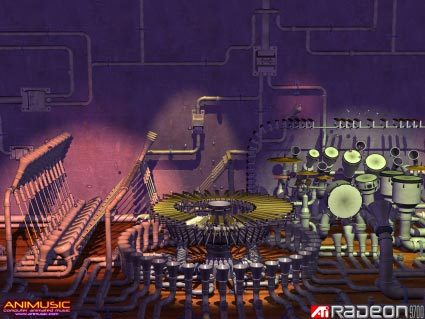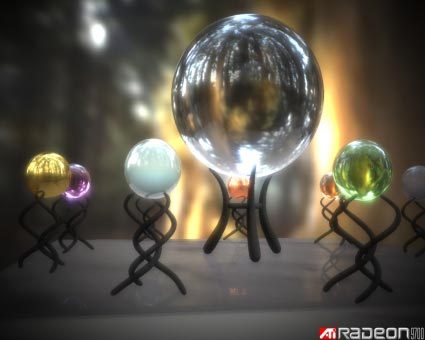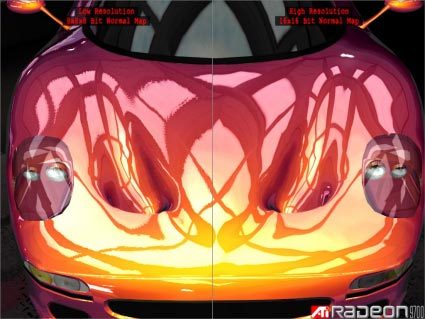Pixel-Churners: A round-up of Radeon 9700 PRO cards
Features
DirectX 9 allows complex shader effects to be calculated in real time. This is the first time that shaders that come into play in sophisticated film sequences have been used.
The 9700 PRO has some more competition, though somewhat closer to home. Next to the "normal" 9700 (not the PRO), it also has to struggle against the cheaper 9500 PRO and 9500 (see ATI Increases Its Lead: The New Radeon 9700, 9500 PRO and 9500 ).
We've already gone over the technical aspects of the Radeon 9700 PRO several times. We compared the card with its competition in a large performance round-up (see Preview: ATI's All In Wonder 9700 PRO and ATi Radeon 9700 PRO - Pretender To The Throne ), and explained its features and the technology that went into making it.
Complex reflection effects using the High Dynamic Range feature.
If you're looking for a Radeon 9700 PRO card in the U.S. or Canada, you'll have a choice between an original ATi card (sporting the label "Built by ATi") or a card from another manufacturer ("Powered by ATi"). In all other countries, ATi leaves the retailing up to its so-called board partners, while still distributing directly to the OEM market. In this test, we examined the original ATi card as well as five other Radeon 9700 PRO boards from Crucial, Hercules, Gigabyte, HIS and Sapphire. All the boards are based on the ATi reference design. The only difference from the "original" is in the cooling, color and software. The chip and RAM clock speeds are identical on all the boards - the CPU runs at 325 MHz and the memory at 310 MHz (or "620 MHz DDR"). So there isn't much point in comparing performance ratings - the features are the true selling points on these cards. Knowing this, we don't list each and every card in the benchmarks. The overclocking test was the only one in which it made sense to see how the individual cards stacked up. For more information, you can read about our large performance test of the Radeon 9700 PRO (Preview: ATI's All In Wonder 9700 PRO ). Please note that the benchmarks in this test were performed on a faster test system.
In this test, we used a somewhat slower computer to reflect the fact that most people don't have access to a powerhouse system. Many will prefer to buy a more modest CPU and invest what they save in a faster graphics card.
DirectX 9 allows effects to be calculated more precisely with floating-point calculations.
Get Tom's Hardware's best news and in-depth reviews, straight to your inbox.



